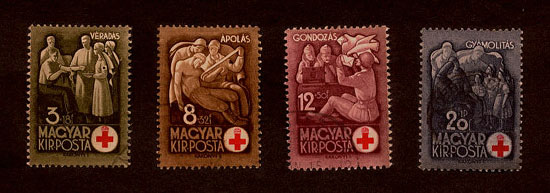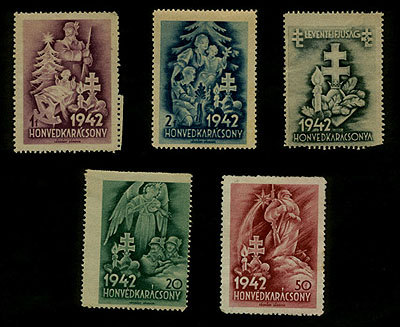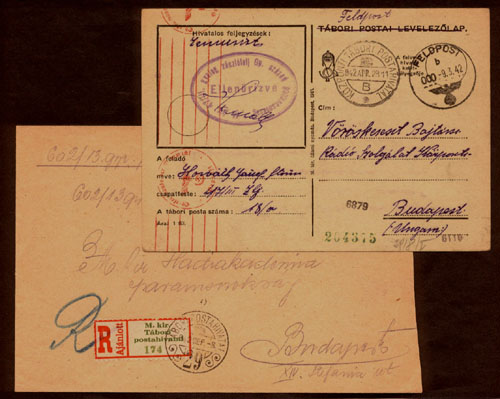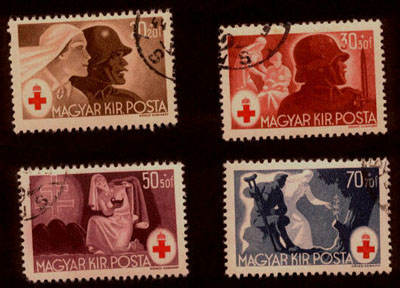|
Introduction Due
to the fear of losing her territories and German military support,
on 27 June 1941, the Hungarian government declared war on Russia.
The bulk of her forces remained in Hungary in order to deter any
Romanian forces from re-taking Transylvania, and only a small
military contingent was sent to Russia. | |
|
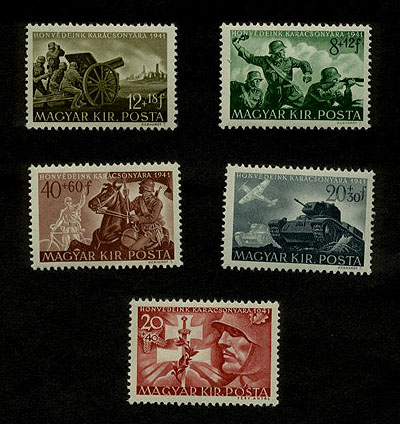
Hungarian semi-postals commemorating the Army
In early December 1941, the Hungarian government issued the following set of
four semi-postal stamps to honor the army: Stalingrad
In spring 1942, Germany's need
for more manpower on the Eastern Front, led the Hungarians to
mobilize their 2nd Army with 200,000 men. Composed of three corps
and 1st Armored Division. The armored division was equipped with
German PzKpfw III and IV tanks as well with Hungarian Toldi light
tanks. | |
|
| |
|
Re-organization
In March Admiral
Horthy ordered what was left of the 2nd Army back to Hungary to
strengthen the home army. Most of the reserves were re-allocated
to the 8th Corps (known to the Hungarians as the Dead Army), which
constituted the only force engaging the Soviets. | |
|
Hungarian Charity Army Issues In 1942 Christmas charity labels were issued to support Hungarian "Honved" Army troops serving on the Eastern Front. The charity label shown on the top right commemorates the Hungarian "Levente" Youth movement, which was incorporated into the Hungarian Army in 1942. | |
|
On 15 October 1944,
Admiral Horthy proclaimed an armistice. Hitler ordered his elite
SS-Commando unit under the leadership of SS Officer Otto Skorzeny
to arrest him and take over the headquarters. Immediately with
German support, a puppet state was formed, composed of ultra-nationalist
"Arrow Cross" party members. |
|
|
Hungarian servicemen sending mail to and from the Eastern Front received free postal privileges. Hungarian units were assigned up to three digit coded field post numbers. The Hungarian military personnel were provided with special field cards costing 1Filler each. These cards were printed in Budapest. All Hungarian field post was censored, a rectangular handstamp was applied when censoring. The most common censored cancel was the double-ring oval marking with the inscription "ELLENORIZVE" and the year, month and day. There is also, other rectangular and triangular censor post-marks. Hungarian soldiers also had airmail service. A similar special field card costing 12Fillers was made. On the top right side, it has a printed stamp showing an eagle holding a sword with the Hungarian Coat of Arms on the background with a 12Filler value. There was free franking for Official Registered Covers mail by corresponding units. | |
|
| |
|
Hungarian field card mailed through the German Feldpost system. Notice it has the word "Feldpost" written and the Hungarian "Tabori Postai Levelezolap" inscription crossed out. The card also has both the German and Hungarian field cancels, and censorship markings. Below is an official military field register cover mailed to Budapest. | |
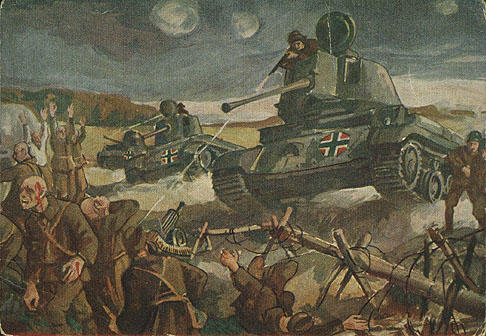
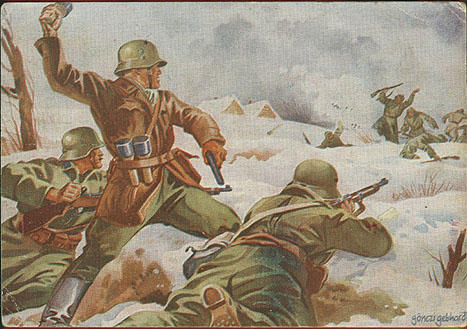
Above are two very rare
war propaganda cards that were mailed in early spring 1944. One card depicts Hungarian Toldi tanks
attacking Soviet troops. The other card illustrates Hungarian infantry men fighting Soviet troops during winter.
| |
|
Hungarian Last Issues The Hungarian government issued many semi-postals with the proceeds of the surtax going to the army or charitable organizations such as Red Cross, etc. On 1 March 1944, the last semi-postals under Horthy's government were issued. The surtax aided the Hungarian Red Cross. |
[ Front Page ] [ Top ] [Previous Page [Next Page]
